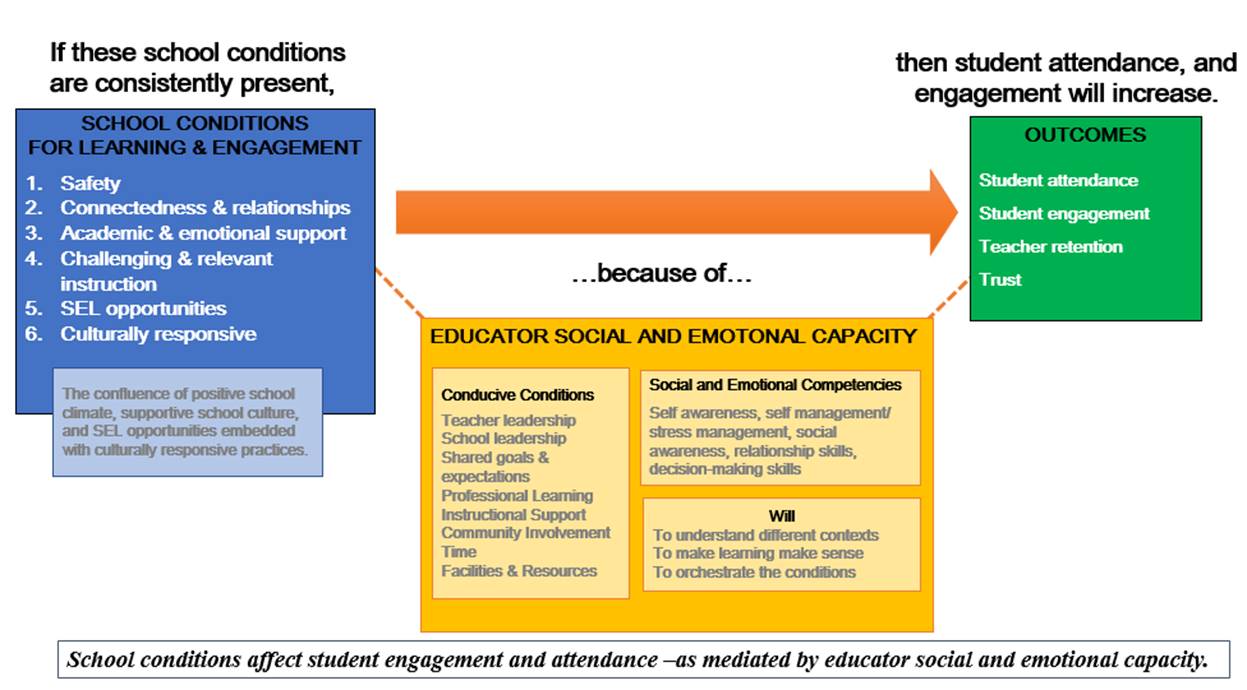The PBS NewsHour segment Empty Chairs showcases how the Cleveland Metropolitan School District (CMSD) is taking a positive, problem-solving approach that engages families and students and leverages the power of engaging the entire community. Although the PBS coverage is fabulous and inspiring, it still leaves a portion of the Cleveland story untold – its earlier investments in improving school climate and social emotional learning.
Prior to starting its ongoing Get 2 School. You Can Make It! attendance campaign, CMSD built the capacity of its schools and educators to nurture positive social emotional learning conditions for responding to students’ social and emotional needs.
This work began following a shooting in 2007 by a student at school that spurred CMSD administrators to ask the American Institute for Research (AIR) to conduct a comprehensive audit. AIR researchers analyzed gaps in CMSD’s education approach and offered recommendations for how schools could improve connectedness and enhance students’ mental wellness and safety. This analysis led to the district’s humanware initiative, a strategy that provides, among other things, supports for how adults interact with students and opportunities for all students to acquire social and emotional competencies such as working on teams and dealing effectively with conflict. Learn more about CMSD’s humanware initiative here.
During The Campaign for Grade Level Reading’s GLR Week 2018, Lorri Hobson, Director of Attendance for Cleveland, David Osher, Vice President of AIR and Hedy Chang, Executive Director of Attendance Works discussed what is involved in taking a trauma informed approach to reducing chronic absence.
Lorri was in the school building when the shooting occurred in 2007. This horrific experience, shared in a powerful video interview between Lorri and Hedy, motivated Lorri to oppose taking a more legalistic, punitive response to poor attendance and emphasize support and engagement. Click here to view the full interview. For Lorri, the key to reducing chronic absence is taking time to ask and understand why students missed school in the first place. Calling families to find out about their barriers to getting to school and then concretely responding to their needs is a core component of the Get To School, You Can Make It Attendance Campaign, Lorri says.
Osher described a framework (see image below) that illustrates how attendance and achievement improve when educators have the capacity to put in place the conditions for learning and engagement, even when students enter school challenged and upset by their experiences outside of school. These types of investments and supports create the “humanware” that is needed to respond to and help to reduce the adverse impact of trauma on students, David says.
Every state in the country is now required to report on chronic absence in their school report cards and 36 states plus the District of Columbia have added it as a metric for school accountability. “As schools and communities develop strategies for reducing chronic absence, they need to keep in mind that high levels of chronic absence is a sign that a greater investment in school climate is needed,” Hedy says.
Safe, positive, engaging learning environments motivate daily attendance even when it isn’t easy to get to school. Students and families are more likely to show up to school if they know that they can turn to the adults in the building for help and support, especially during times of times of need.
Click here to download the PowerPoint presentation from the session at GLR week.
